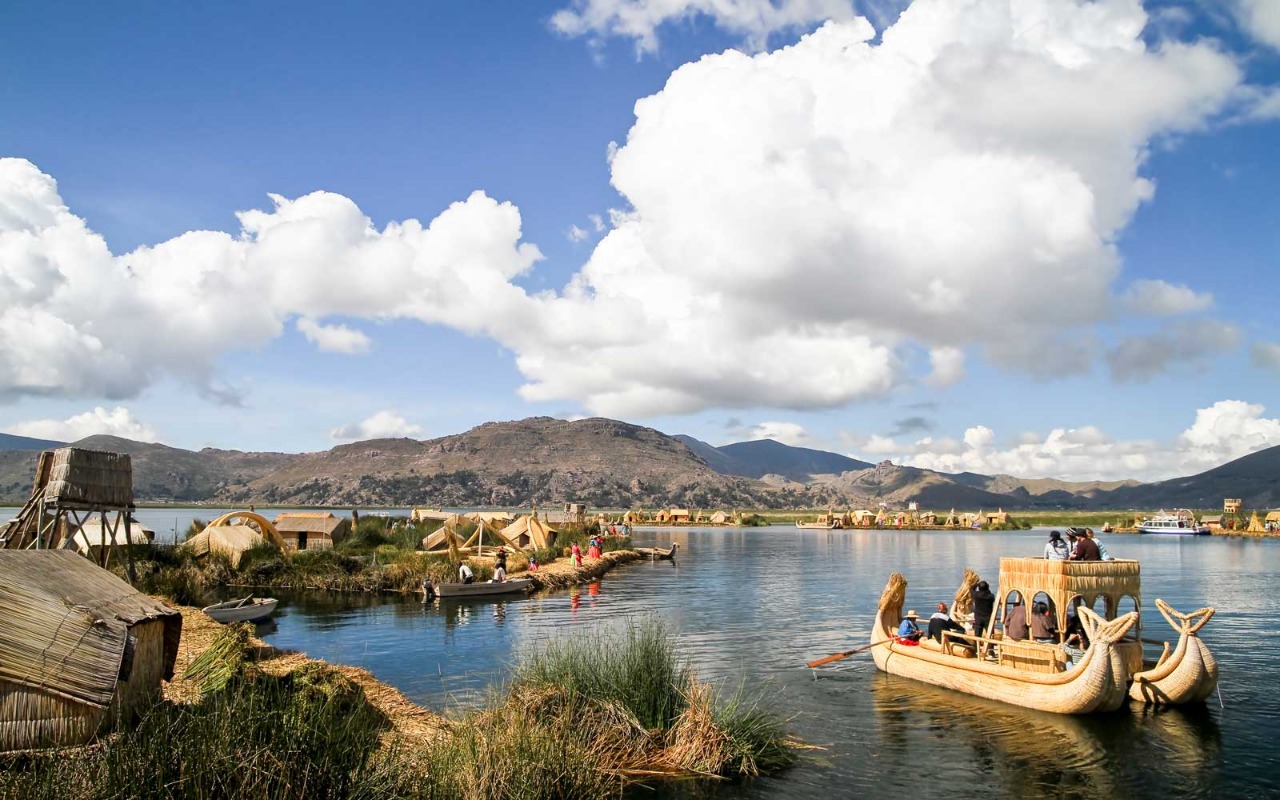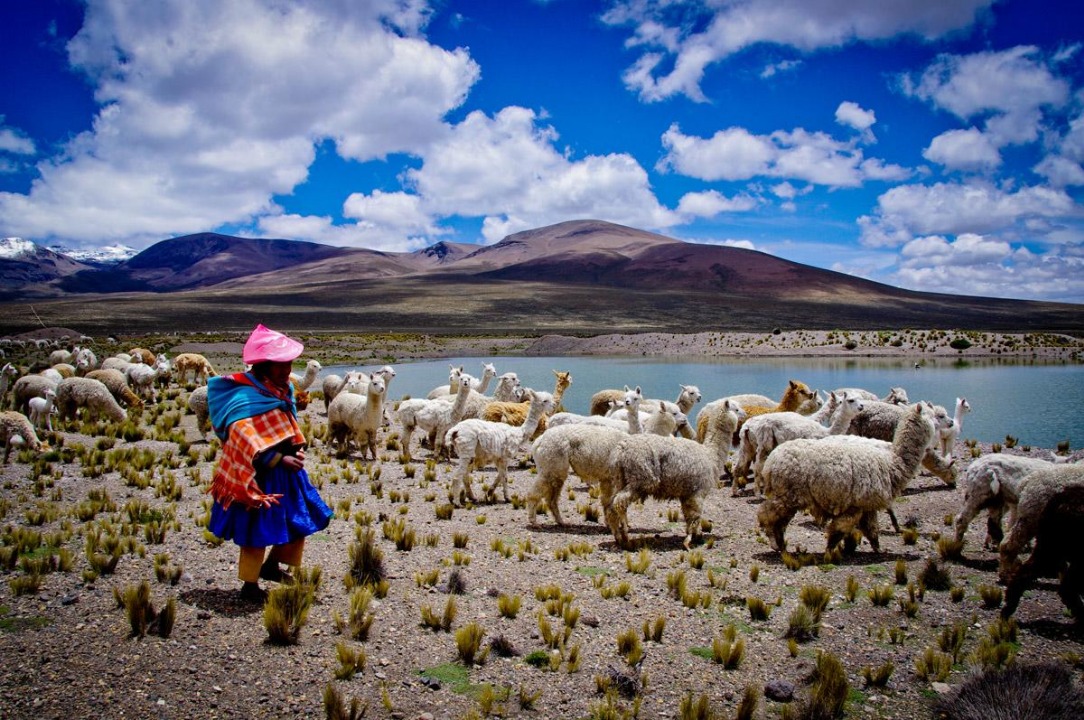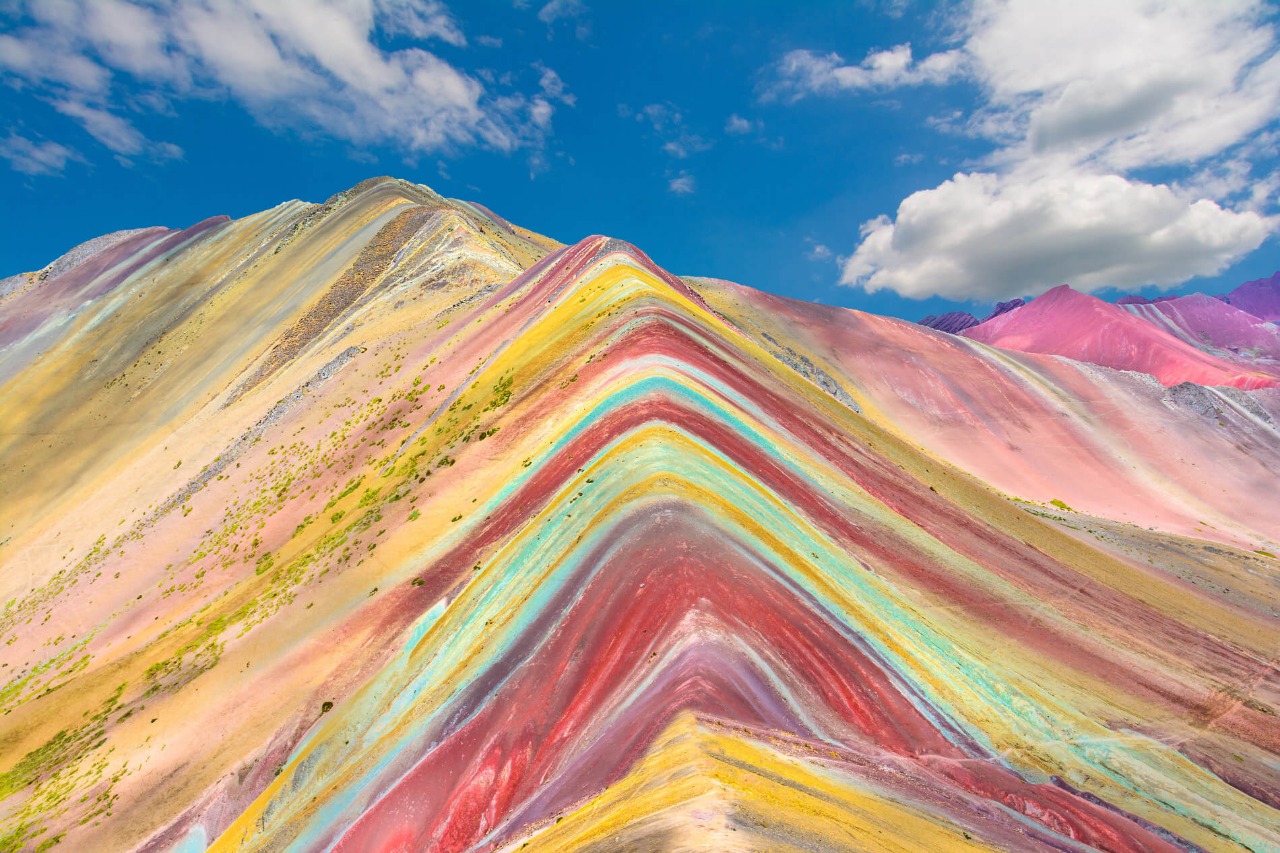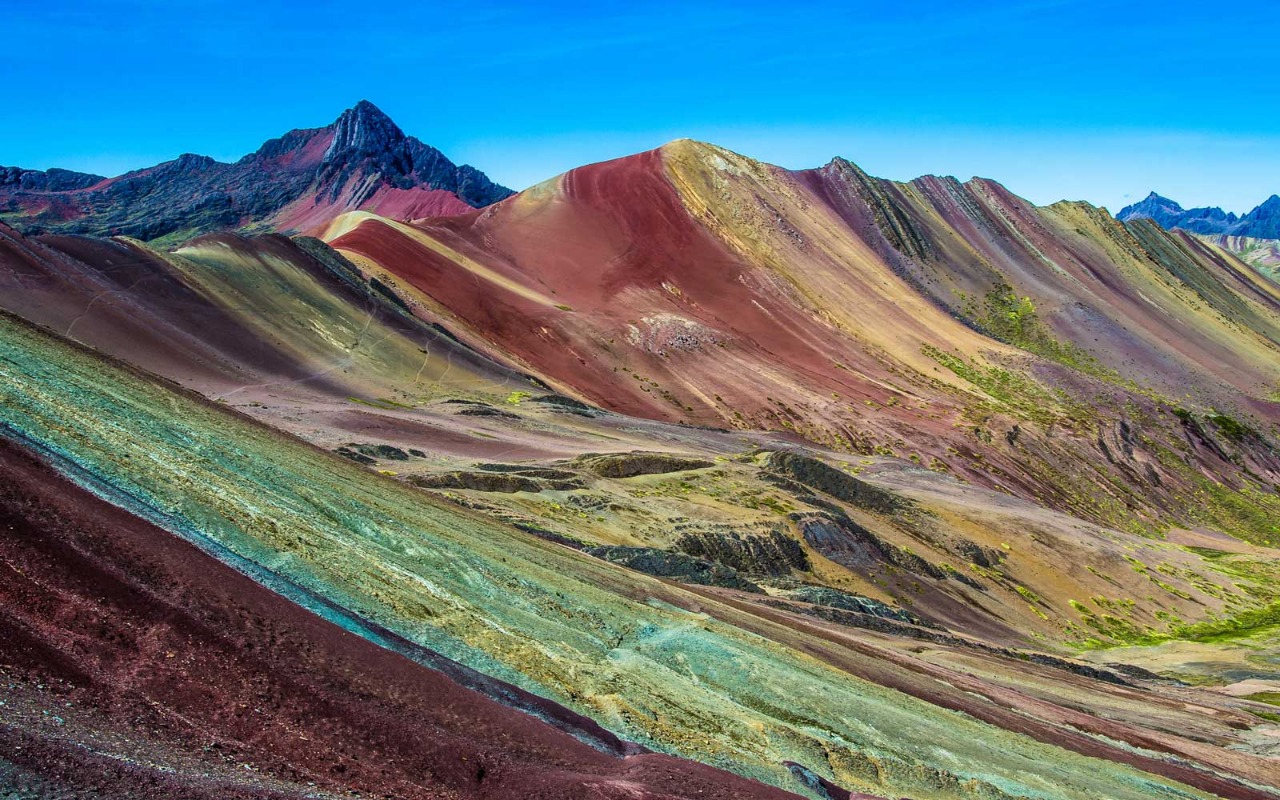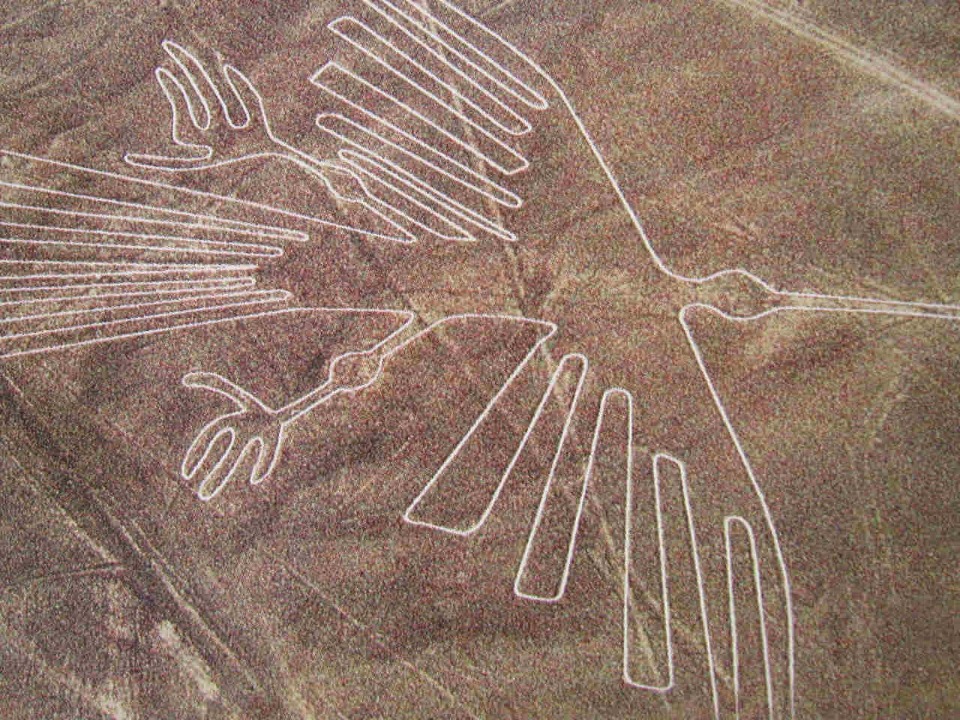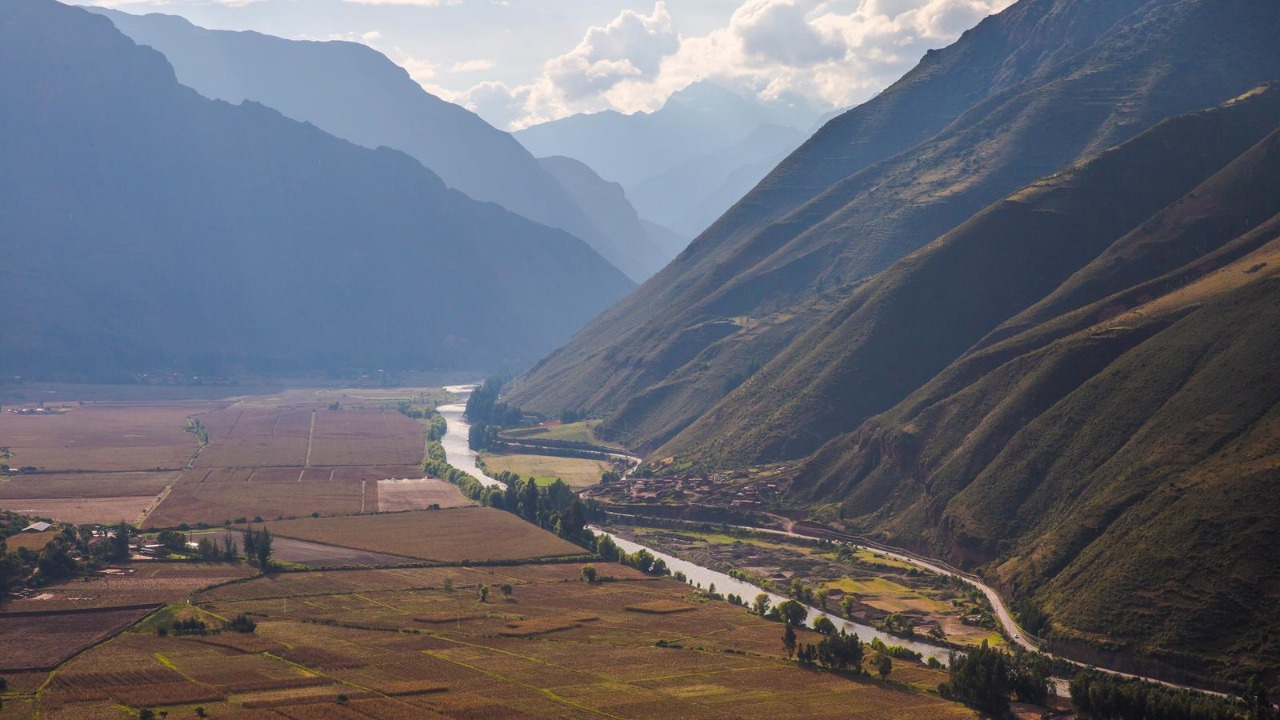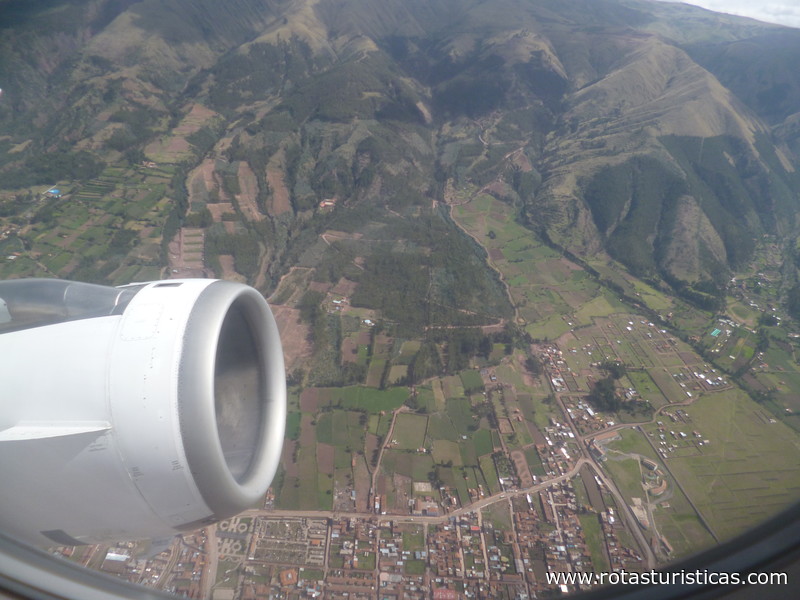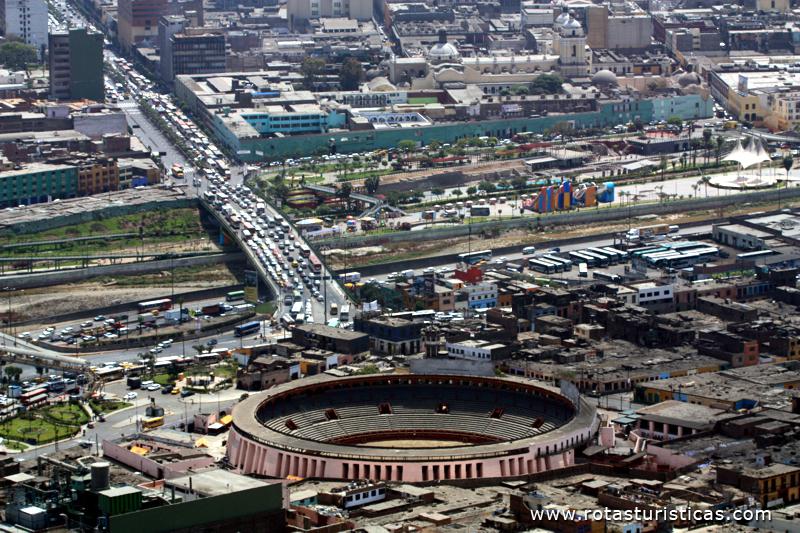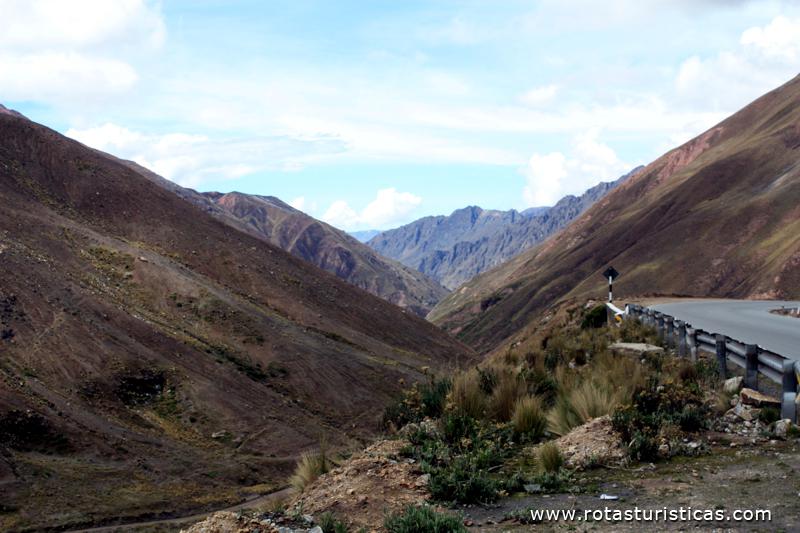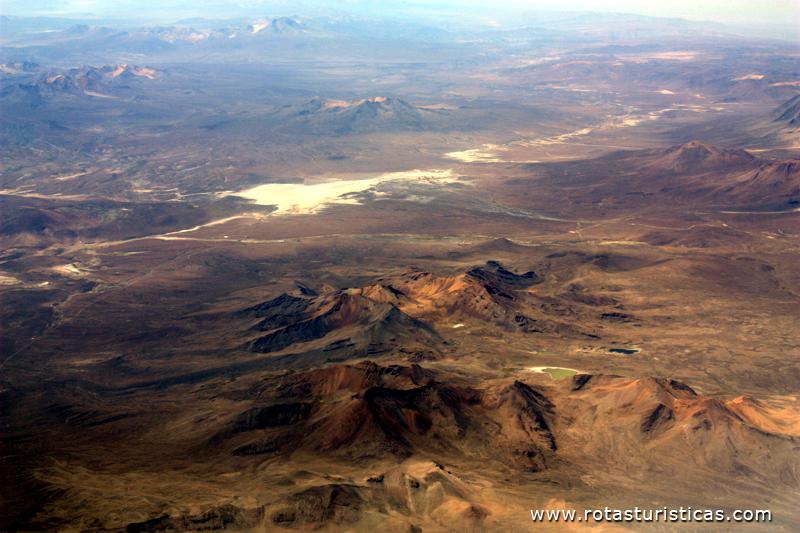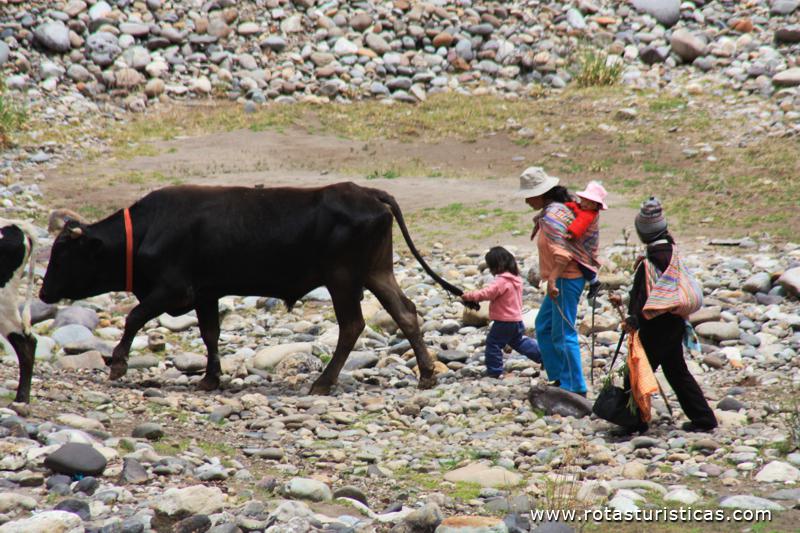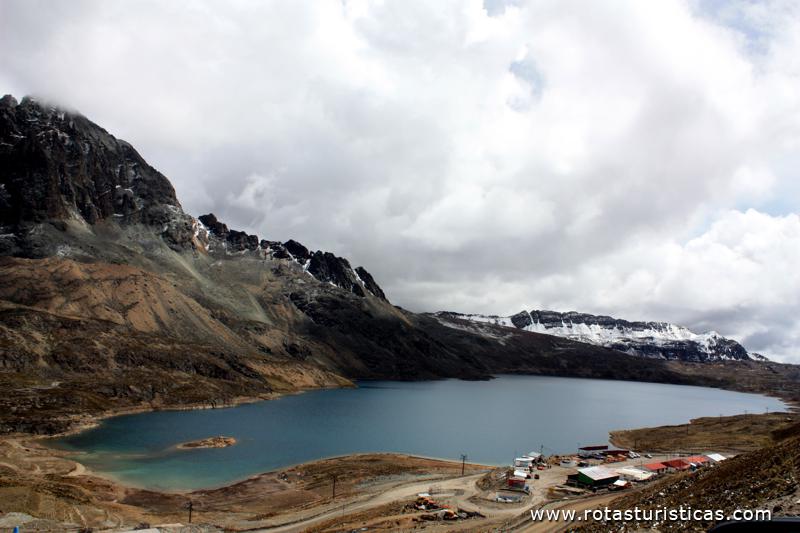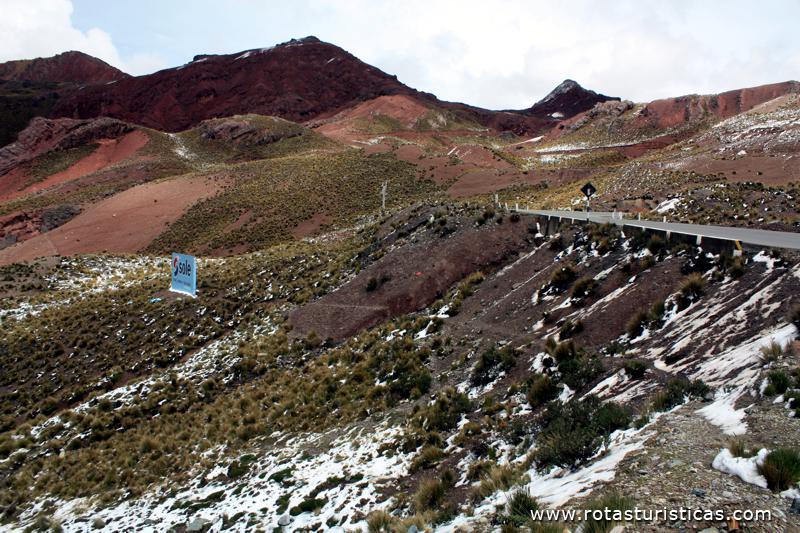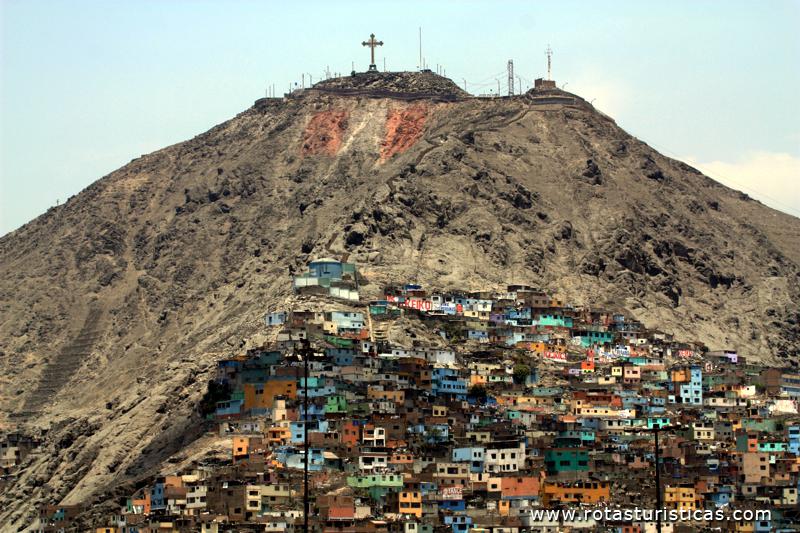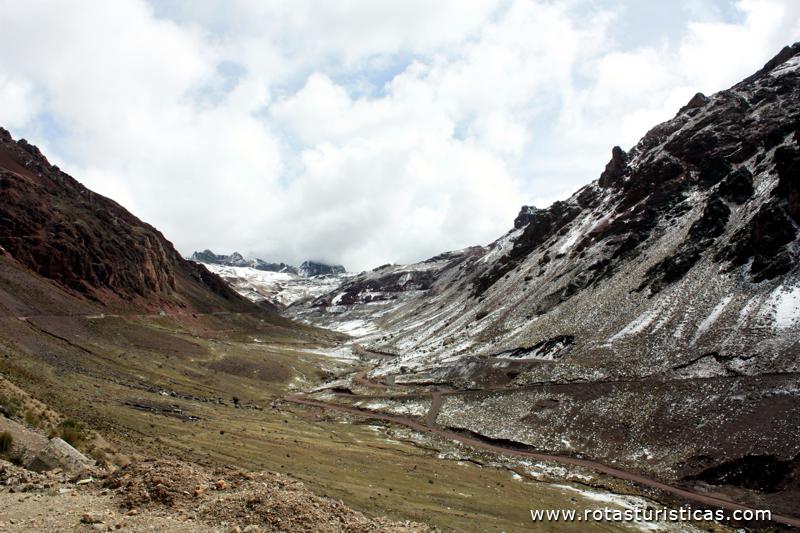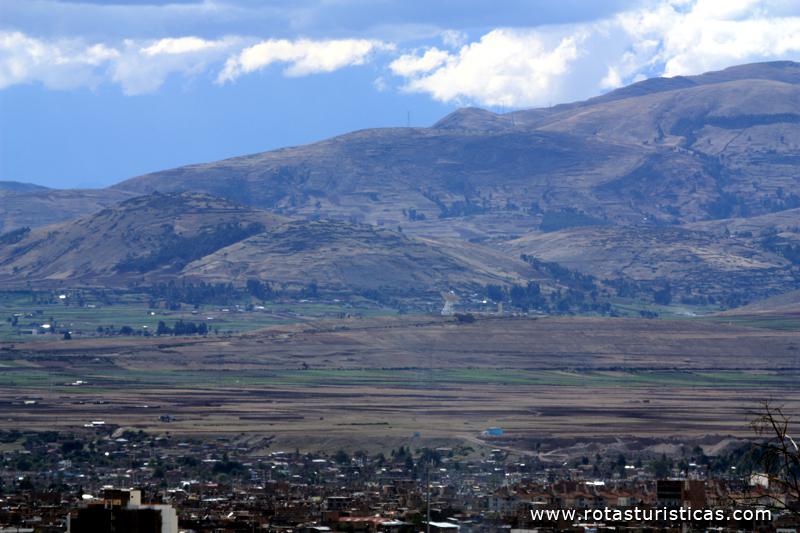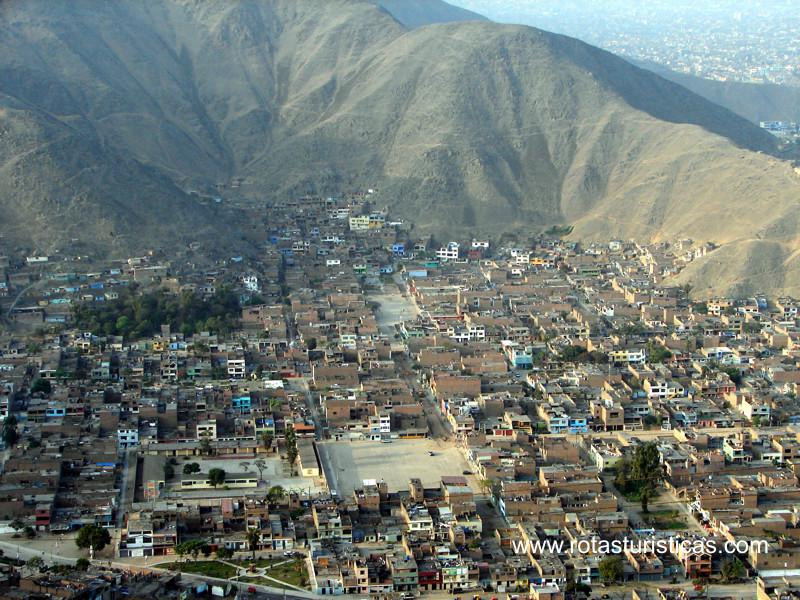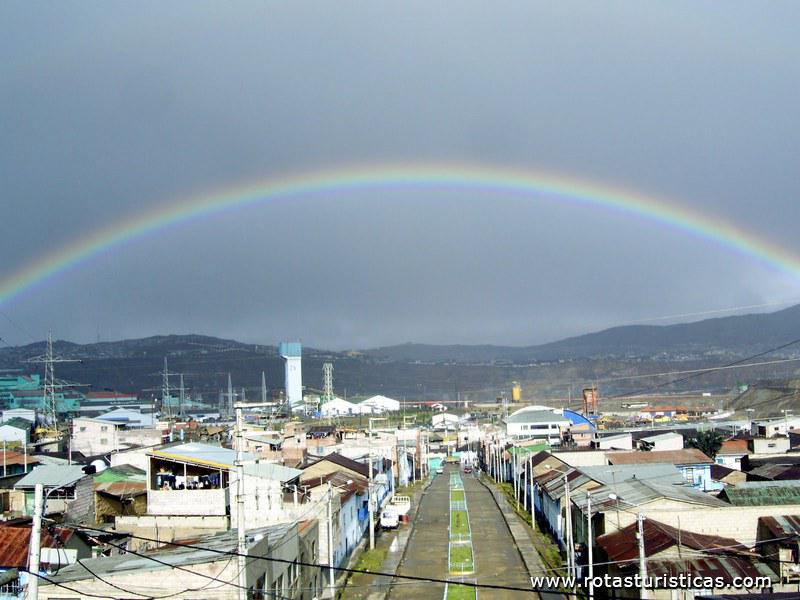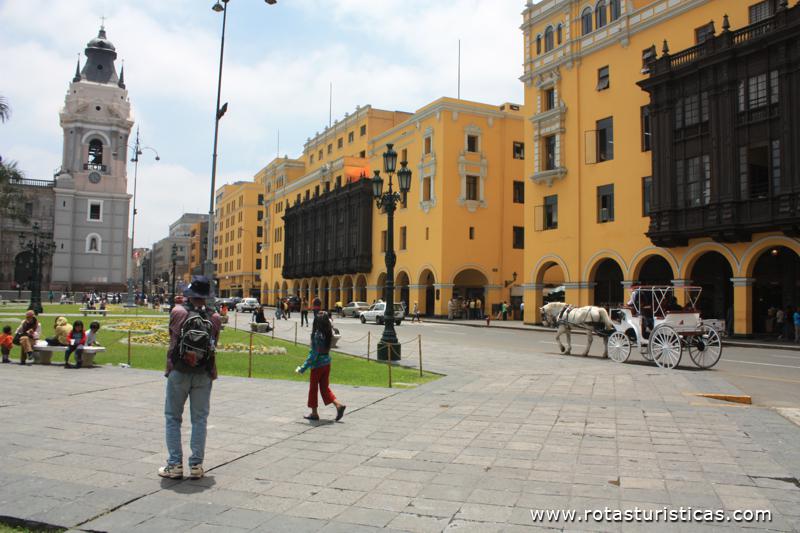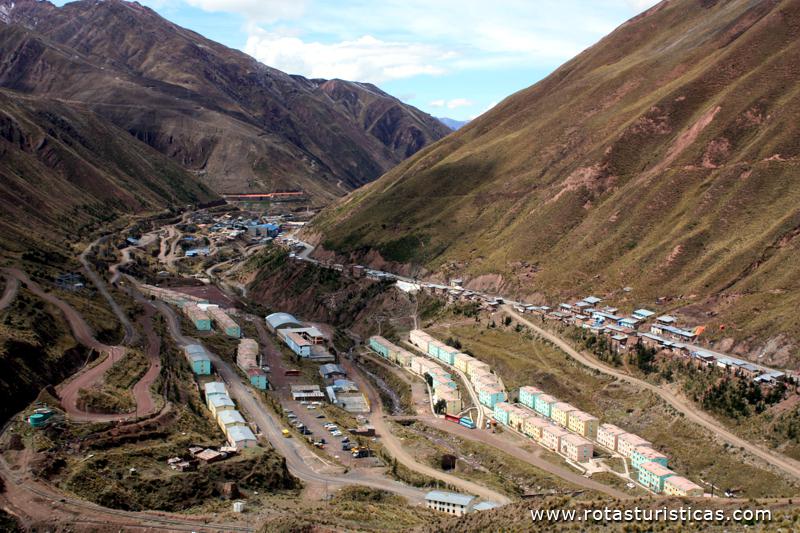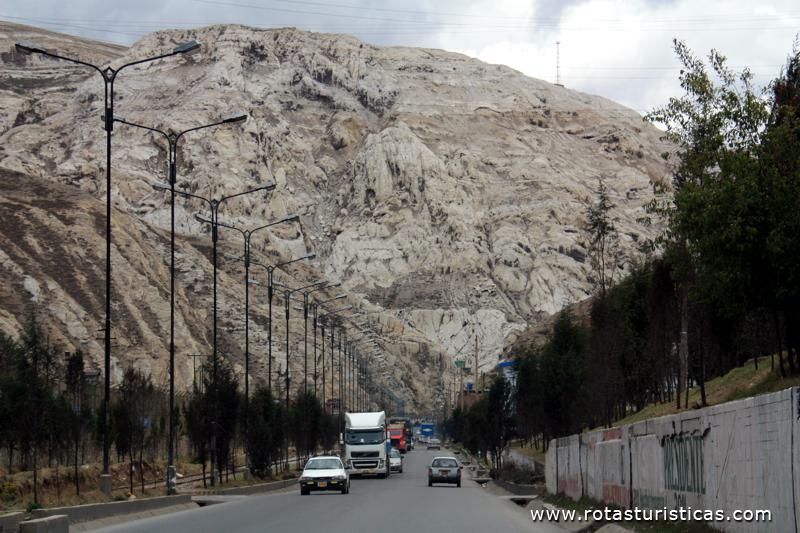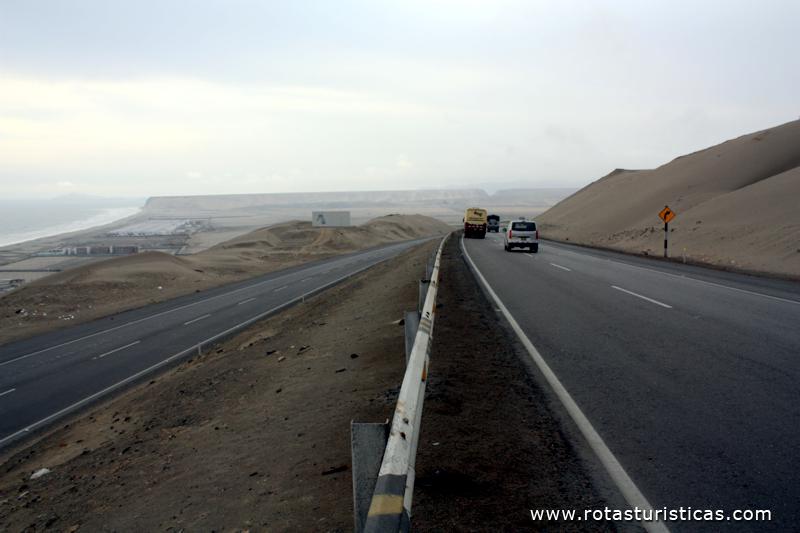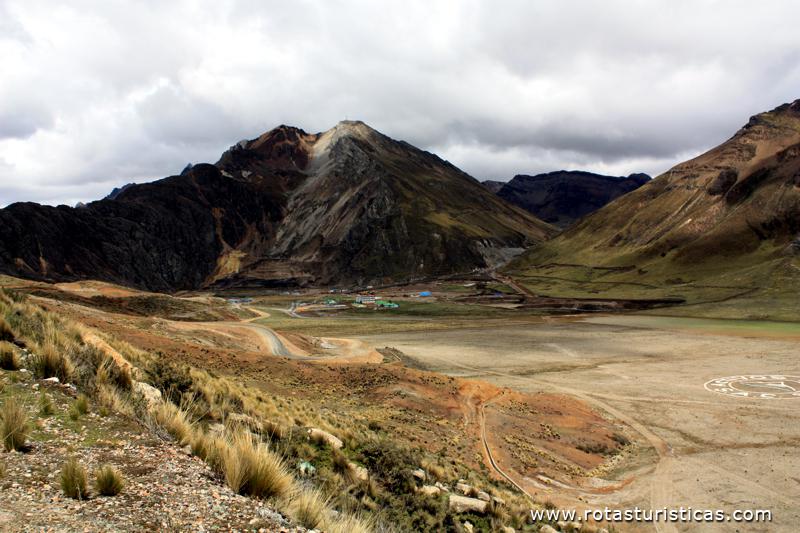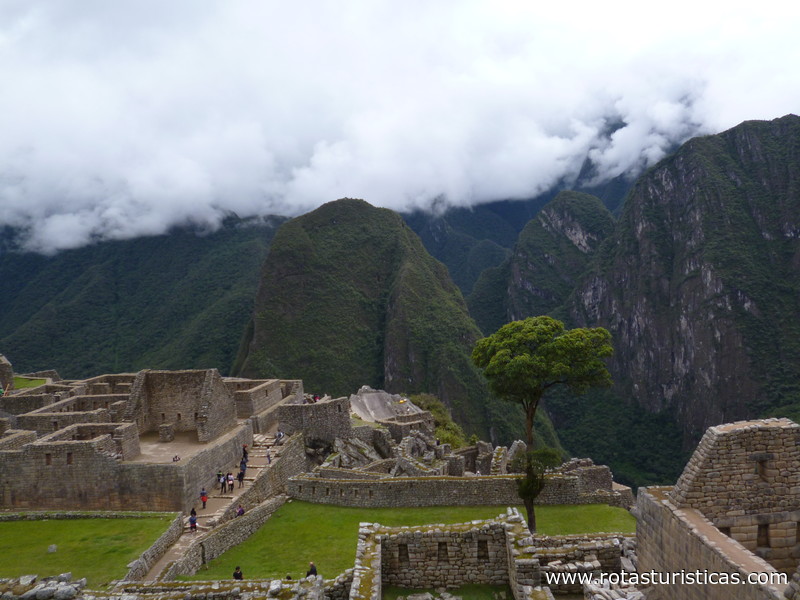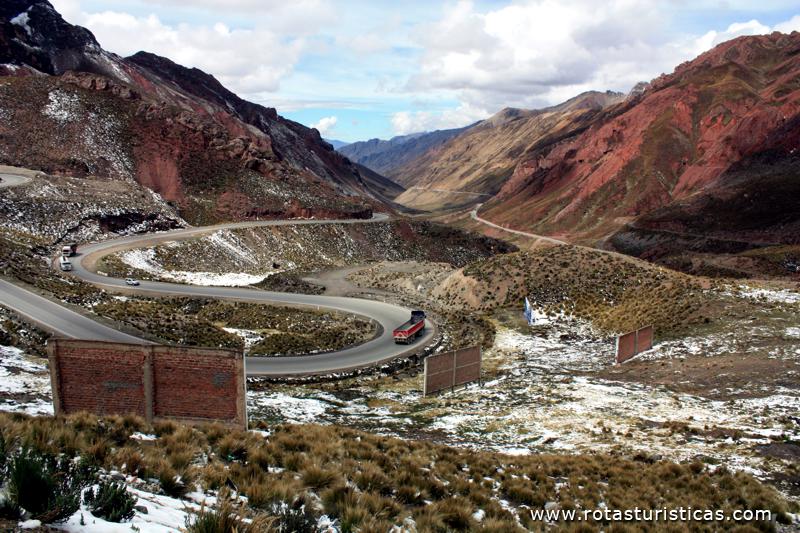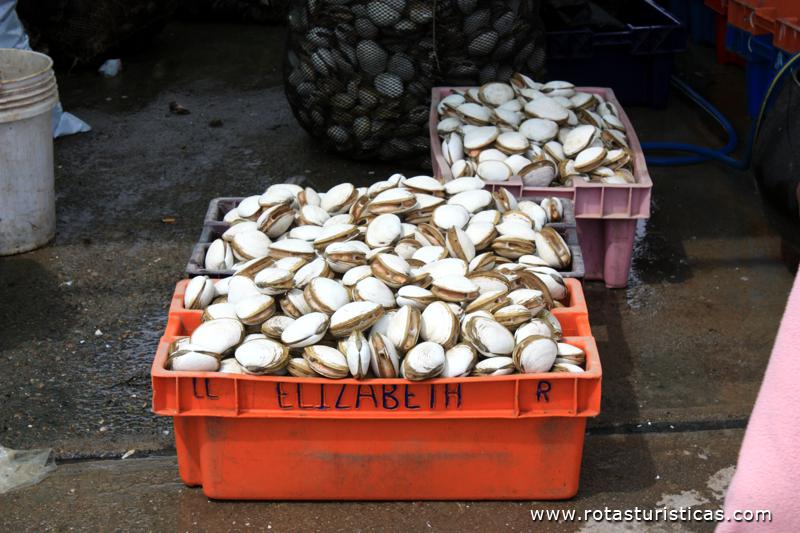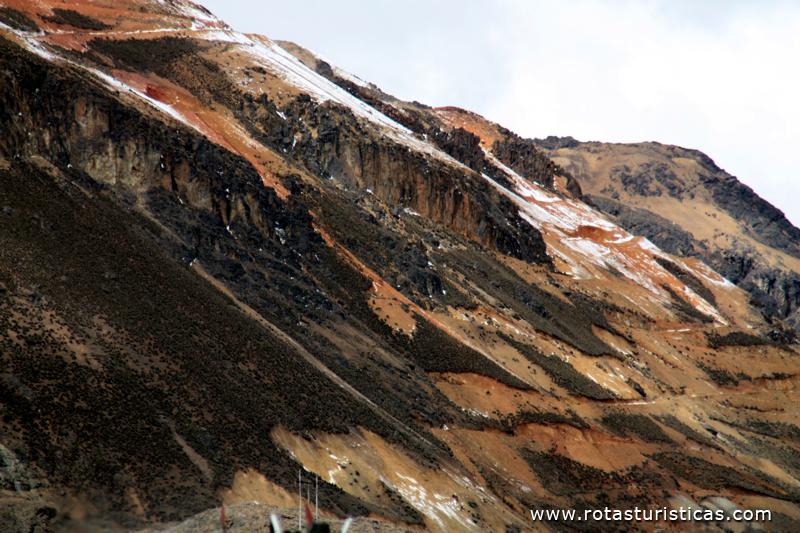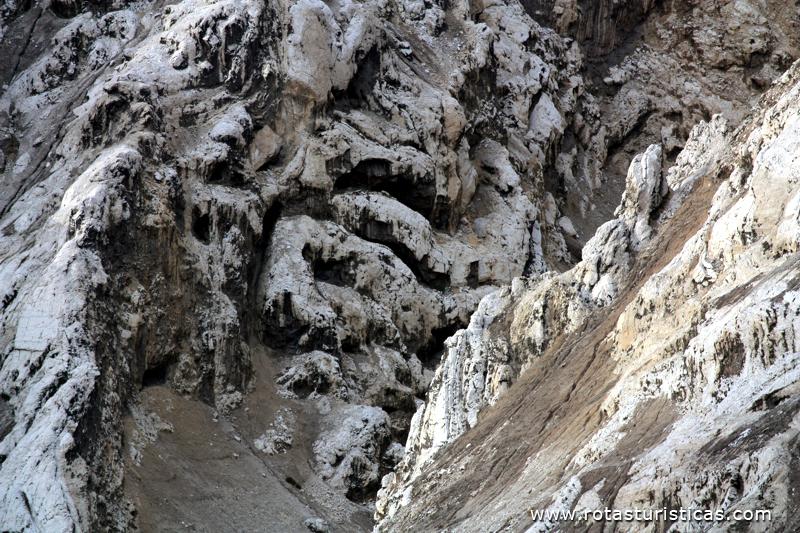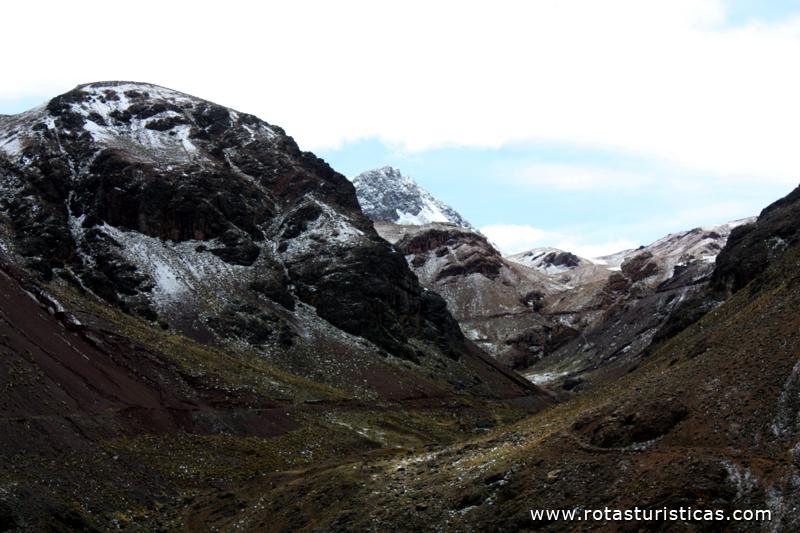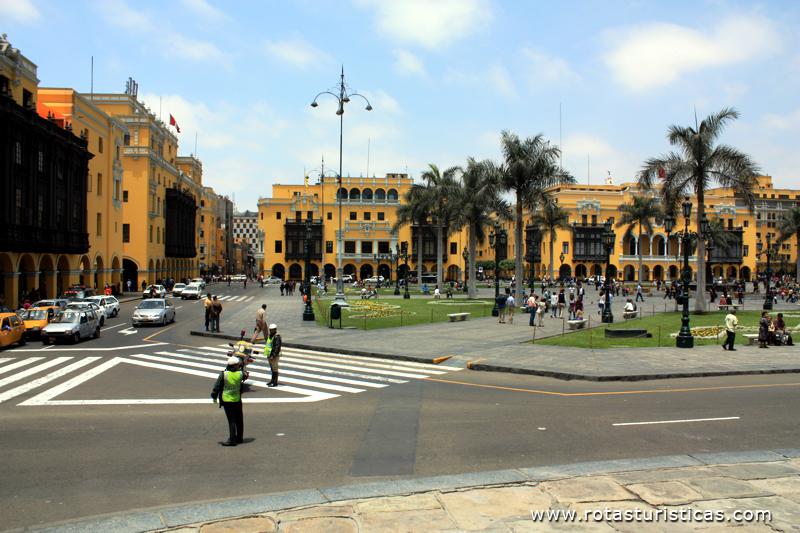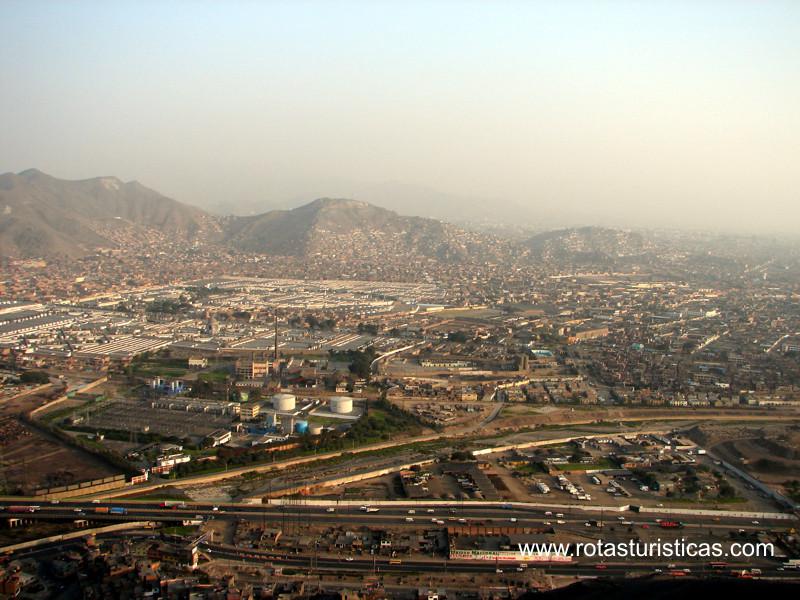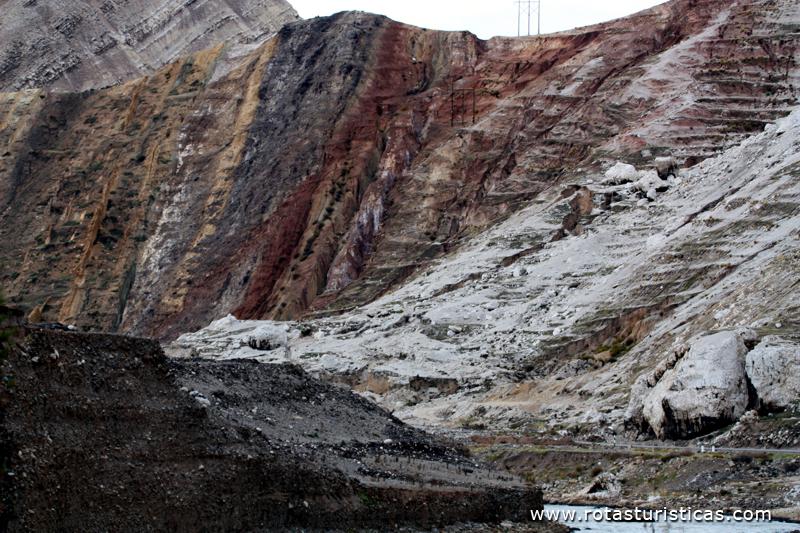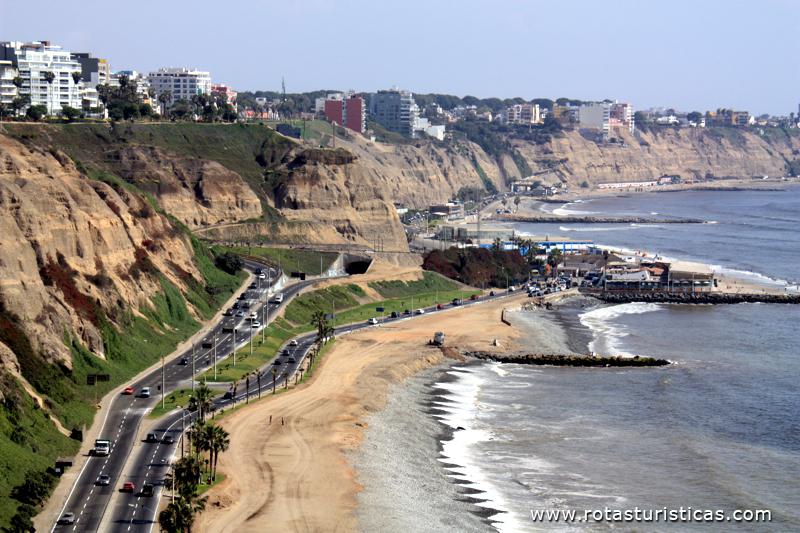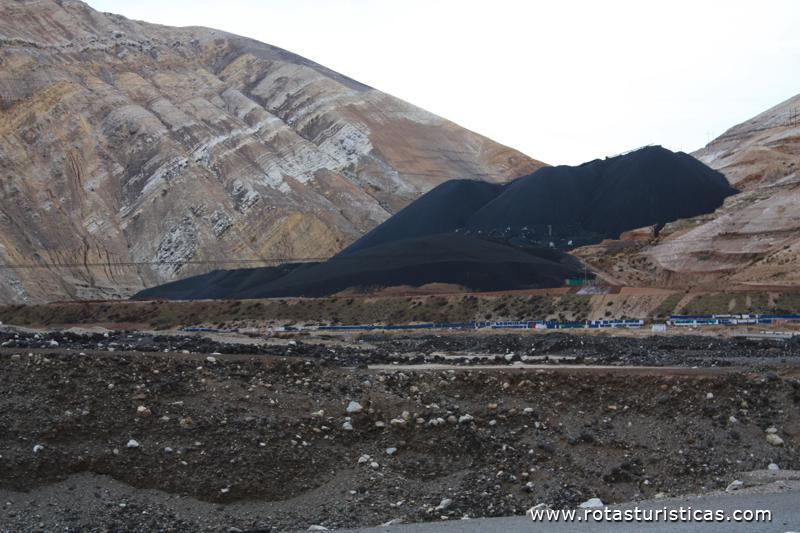Pictures of: Peru
Location map
Airports
Hotels and other Accommodation
Golf Courses
What to visit
Where to Eat
Where to have fun
Consulates & Embassies
World Nomads
The Travel Insurance with the largest coverage

The Travel Insurance with the largest coverage

Peru
Peru is a South American country bordered on the north by Ecuador and Colombia, on the east by Brazil and Bolivia, and on the south by Chile. Its coastline to the west is bathed by the Pacific Ocean.
The Peruvian territory sheltered the Caral civilization, one of the oldest in the world, as well as the Inca Empire, considered the largest pre-Columbian State of America. Its territory was elevated to viceroyalty by the Spanish Empire, in Century XVI. Today, Peru is a democratic presidential republic divided into 25 regions. Its geography is varied, exhibiting from arid plains on the Pacific coast, the snowy peaks of the Andes and the Amazonian forest, characteristics that provide to this country diverse natural resources.
The Peruvian territory sheltered the Caral civilization, one of the oldest in the world, as well as the Inca Empire, considered the largest pre-Columbian State of America. Its territory was elevated to viceroyalty by the Spanish Empire, in Century XVI. Today, Peru is a democratic presidential republic divided into 25 regions. Its geography is varied, exhibiting from arid plains on the Pacific coast, the snowy peaks of the Andes and the Amazonian forest, characteristics that provide to this country diverse natural resources.
Official language
Spanish
Currency
Novo sol. The US dollar is also commonly used.
Documentation
The passport must be valid for at least six months.
Citizens belonging to the EU do not require prior visas for short stays. The visa is granted upon entry into the country for a period of up to 180 days. After the deadline, they will have to pay a fine of $ 1 a day or leave the country to return later.
Citizens belonging to the EU do not require prior visas for short stays. The visa is granted upon entry into the country for a period of up to 180 days. After the deadline, they will have to pay a fine of $ 1 a day or leave the country to return later.
Tourism
Peru is a country of long standing tradition and indigenous past, but also strongly linked to the customs imposed by the Spanish conquistadors who arrived in the region in the first half of the 16th century. This mixture of cultures left in the vast territory historical monuments, churches and archaeological sites, not to mention that nature here does not stop for less, with forests, deserts and snowy mountain ranges.
In the list of cities and attractions not to be missed is Cusco, a World Heritage Site, whose streets and alleys of stone seem to breathe the same airs of the Inca era. The capital, Lima, has charming colonial architecture. But the mysterious territories of Machu Picchu are the most intense attraction of tourists visiting this mestizo country.
On the north coast, the axis between the colonial Trujillo and the calm Chiclayo reserves impressive archaeological discoveries. There the Lord of Sipán was found, a demigod of the Moche culture, previous to the Incas, as well as the Lady of Cao, a mummy preserved after 1700 years that shows the important role of women in pre-Columbian societies. In this region are also the ruins of Chan Chan, the monumental capital of Chimu clay, a World Heritage Site since 1986.
When you visit the Andean highlands, remember that altitude can cause you mountain sickness (soroche), so follow a slow pace to adapt and enjoy the place.
Already to the south are the mysterious Nazca lines, source of the most crazed theories about its function and construction, going from aliens to a lost superior civilization. Be that as it may, you can only appreciate its size of airplane, helicopter or balloon.
Another Peruvian side that starts to enter the map is its gastronomy. Spanish, Italian and Japanese immigrants created their own versions of recipes from their homeland and adapted them to what they found in local markets. With its immense variety of potatoes, corn, tomatoes, fish and peppers, increasingly elaborate and unique dishes were born and gave origin to the local cuisine. Now the simple ceviche, a marinade of fish, widens its horizons and wins wonderful versions. Here you can also find pisco, the national drink, a distillate of grape must, the basis for elaborate drinks.
Spectacular ruins, fundamental trekking, a unique culture and a rich gastronomy.
In the list of cities and attractions not to be missed is Cusco, a World Heritage Site, whose streets and alleys of stone seem to breathe the same airs of the Inca era. The capital, Lima, has charming colonial architecture. But the mysterious territories of Machu Picchu are the most intense attraction of tourists visiting this mestizo country.
On the north coast, the axis between the colonial Trujillo and the calm Chiclayo reserves impressive archaeological discoveries. There the Lord of Sipán was found, a demigod of the Moche culture, previous to the Incas, as well as the Lady of Cao, a mummy preserved after 1700 years that shows the important role of women in pre-Columbian societies. In this region are also the ruins of Chan Chan, the monumental capital of Chimu clay, a World Heritage Site since 1986.
When you visit the Andean highlands, remember that altitude can cause you mountain sickness (soroche), so follow a slow pace to adapt and enjoy the place.
Already to the south are the mysterious Nazca lines, source of the most crazed theories about its function and construction, going from aliens to a lost superior civilization. Be that as it may, you can only appreciate its size of airplane, helicopter or balloon.
Another Peruvian side that starts to enter the map is its gastronomy. Spanish, Italian and Japanese immigrants created their own versions of recipes from their homeland and adapted them to what they found in local markets. With its immense variety of potatoes, corn, tomatoes, fish and peppers, increasingly elaborate and unique dishes were born and gave origin to the local cuisine. Now the simple ceviche, a marinade of fish, widens its horizons and wins wonderful versions. Here you can also find pisco, the national drink, a distillate of grape must, the basis for elaborate drinks.
Spectacular ruins, fundamental trekking, a unique culture and a rich gastronomy.
Gastronomy
Many people do not know this aspect of Peru, but the country has a strong gastronomy. With a diversified cuisine, Peruvians are known for mixing indigenous ingredients with Spanish, Japanese, Italian, Chinese and even African influences.
The Peruvian gastronomy is becoming so successful that it begins to be recognized internationally. One of the advantages of Peruvian cuisine is that this country is the one that brings together the largest variety of typical dishes, reaching a total of 491 recipes. Of all the possibilities, the most consumed are the tacu tacu, the spicy of shrimp, the chairo, the lomo saltado and the ceviche.
With these characteristics, it is normal that gastronomic tourism is developed. In fact, the Peruvian government itself has encouraged this sector, giving interviews to talk about the subject. Another attitude that is being taken is the holding of gastronomic events. Several of these events take place throughout the year in the most diverse departments of the country, with each event focusing on the typical gastronomy of its region.
One tip, in this sense, is to visit Peru during the Feira Hoteles & Cubiertos, which is already becoming traditional in the country. Generally, this gastronomic fair happens during the month of November and brings together great chefs of hotels and Peruvian companies.
The Peruvian gastronomy was declared, in 2007, a cultural patrimony of the country. The justification was that Peruvian cuisine has the power to show the cultural expression of the Peruvian people and still helps to consolidate the country's cultural identity.
Another curiosity is the fact that the typical Peruvian cuisine uses some main ingredients, being potatoes, sweet potatoes, pepper, tomato, cherimoia (a typical country fruit), graviola, achiote (seed of a fruit typical of Peru), fish, lupine, maize and tubers in general.
The Peruvian gastronomy is becoming so successful that it begins to be recognized internationally. One of the advantages of Peruvian cuisine is that this country is the one that brings together the largest variety of typical dishes, reaching a total of 491 recipes. Of all the possibilities, the most consumed are the tacu tacu, the spicy of shrimp, the chairo, the lomo saltado and the ceviche.
With these characteristics, it is normal that gastronomic tourism is developed. In fact, the Peruvian government itself has encouraged this sector, giving interviews to talk about the subject. Another attitude that is being taken is the holding of gastronomic events. Several of these events take place throughout the year in the most diverse departments of the country, with each event focusing on the typical gastronomy of its region.
One tip, in this sense, is to visit Peru during the Feira Hoteles & Cubiertos, which is already becoming traditional in the country. Generally, this gastronomic fair happens during the month of November and brings together great chefs of hotels and Peruvian companies.
The Peruvian gastronomy was declared, in 2007, a cultural patrimony of the country. The justification was that Peruvian cuisine has the power to show the cultural expression of the Peruvian people and still helps to consolidate the country's cultural identity.
Another curiosity is the fact that the typical Peruvian cuisine uses some main ingredients, being potatoes, sweet potatoes, pepper, tomato, cherimoia (a typical country fruit), graviola, achiote (seed of a fruit typical of Peru), fish, lupine, maize and tubers in general.
Weather
In the period from October to April there is always the possibility of great weather, particularly in mountainous areas that cause torrential rains, floods and debilitation on the slopes of the mountains, creating danger of great stone overthrows and landslides (known as "huaicos" ).
Jungle: hot and humid and tropical rain; Saw: cold and dry, coastal zone: humid and temperate.
Jungle: hot and humid and tropical rain; Saw: cold and dry, coastal zone: humid and temperate.
Safety
1. As a consequence of the presence of elements of the Sendero Luminoso terrorist organization, most often associated with drug trafficking, it is advisable not to travel in the valleys of the Ene and Apurimac rivers, the Central Sierra and the Huallega river valley, the Putumayo river valley along the border with Colombia and the Sierra Norte, in the following areas:
- District of Cholon, Province of Marañon, department of Huánaco;
- District of Monzon, in the province of Humalies, in the department of Huanuco;
- All the province of Leoncio Prado, of the department of Huánaco;
- All the province of Tocache, of the department of San Martin;
- The entire province of Padre Abad, in the department of Ucayali.
2. A little throughout Peru there may be situations of social conflict, such as demonstrations, stoppages, roadblocks and strikes, which sometimes degenerate into violent episodes. The regions most affected in recent years by this type of occurrences are the mining areas of the Andean cordillera and the zone bordering with Bolivia. Given the unpredictability of social movements and which areas may be affected, travelers are advised to keep informed about safety conditions.
The common crime (robbery, robbery) is high in places most frequented by tourists such as the historical centers of Lima, Cusco, Trujillo and Arequipa, Machu Picchu and other archaeological sites.
Nationals are advised to avoid recourse to informal guides in tourist areas by hiring only official guides. It is advisable to watch and secure bags, backpacks, cameras and other personal belongings.
Caution is advised in using, avoiding the public display of money, credit cards, valuables, as well as passports, identification documents or air tickets.
It is not advisable to travel alone and to avoid road trips at night. It is recommended that long journeys to the interior of the country be made by air, not by bus or car.
Peru is situated in a region of high seismic risk. Earthquakes are frequent throughout the country, especially along the coast and the Andean mountain range.
- District of Cholon, Province of Marañon, department of Huánaco;
- District of Monzon, in the province of Humalies, in the department of Huanuco;
- All the province of Leoncio Prado, of the department of Huánaco;
- All the province of Tocache, of the department of San Martin;
- The entire province of Padre Abad, in the department of Ucayali.
2. A little throughout Peru there may be situations of social conflict, such as demonstrations, stoppages, roadblocks and strikes, which sometimes degenerate into violent episodes. The regions most affected in recent years by this type of occurrences are the mining areas of the Andean cordillera and the zone bordering with Bolivia. Given the unpredictability of social movements and which areas may be affected, travelers are advised to keep informed about safety conditions.
The common crime (robbery, robbery) is high in places most frequented by tourists such as the historical centers of Lima, Cusco, Trujillo and Arequipa, Machu Picchu and other archaeological sites.
Nationals are advised to avoid recourse to informal guides in tourist areas by hiring only official guides. It is advisable to watch and secure bags, backpacks, cameras and other personal belongings.
Caution is advised in using, avoiding the public display of money, credit cards, valuables, as well as passports, identification documents or air tickets.
It is not advisable to travel alone and to avoid road trips at night. It is recommended that long journeys to the interior of the country be made by air, not by bus or car.
Peru is situated in a region of high seismic risk. Earthquakes are frequent throughout the country, especially along the coast and the Andean mountain range.
Health care
It is alerted to the possibility of contracting dengue (aedes aegypt) through mosquito bite. The symptoms are very high fever, headaches, eye pains, muscle and joint aches and rashes. It may also be accompanied by abdominal pains and minor hemorrhages. More severe cases can be life-threatening. The most affected areas are the Amazon rainforest and irrigated coastal regions. The prevention, not completely effective, is the use of repellents, long sleeves, pants, hat, socks, closed shoes and, whenever possible, sleeping under a mosquito net.
The sanitary network is good in the capital and reasonable in the rest of the country. The water must, however, be boiled. Medical treatment can be expensive and not available in all regions of the country. In Lima there are good clinics and private hospitals. The public health system is deficient.
Since endemic hepatitis, dysentery and dengue, it is not advisable to drink running water or vegetables or fruit for disinfection.
Vaccines against hepatitis, typhoid, tetanus and polio are recommended. It is also recommended to protect against sunburn, which is very strong due to the proximity of the equator.
The care to be taken varies according to the three natural regions where Peru is divided: In the jungle, the yellow fever vaccine and protection against malaria are recommended - use repellents, wear long-sleeved clothing, especially at dawn and nightfall. Prophylaxis against malaria can be made.
In the mountains, at altitudes above 3000 meters above sea level, for example in Cusco, can occur in the first days the soroche, or "altitude sickness", characterized by difficulty in breathing, fatigue and headaches. People with heart problems should consult their doctor before traveling to these areas.
It is advisable to rest and moderate intake of solids and liquids within the first few hours after arrival to allow adaptation and avoid discomfort.
On the Coast there is no particular recommendation, except for the use of adequate sun protection.
Medical treatment can be expensive and not available in all regions of the country. In Lima there are good clinics and private hospitals. The public health system is deficient. It is therefore advisable to subscribe to a covered travel and health insurance policy in this country.
The sanitary network is good in the capital and reasonable in the rest of the country. The water must, however, be boiled. Medical treatment can be expensive and not available in all regions of the country. In Lima there are good clinics and private hospitals. The public health system is deficient.
Since endemic hepatitis, dysentery and dengue, it is not advisable to drink running water or vegetables or fruit for disinfection.
Vaccines against hepatitis, typhoid, tetanus and polio are recommended. It is also recommended to protect against sunburn, which is very strong due to the proximity of the equator.
The care to be taken varies according to the three natural regions where Peru is divided: In the jungle, the yellow fever vaccine and protection against malaria are recommended - use repellents, wear long-sleeved clothing, especially at dawn and nightfall. Prophylaxis against malaria can be made.
In the mountains, at altitudes above 3000 meters above sea level, for example in Cusco, can occur in the first days the soroche, or "altitude sickness", characterized by difficulty in breathing, fatigue and headaches. People with heart problems should consult their doctor before traveling to these areas.
It is advisable to rest and moderate intake of solids and liquids within the first few hours after arrival to allow adaptation and avoid discomfort.
On the Coast there is no particular recommendation, except for the use of adequate sun protection.
Medical treatment can be expensive and not available in all regions of the country. In Lima there are good clinics and private hospitals. The public health system is deficient. It is therefore advisable to subscribe to a covered travel and health insurance policy in this country.
Telecommunications and Electricity
Mobile Phones
The use of mobile devices can be used if roaming is enabled, however, paying attention to very high roaming charges.
Internet
Peru is reasonably served with internet services, there are several cybers-cafes with high-speed connections.
In case you have a laptop or notebook, there are numerous cafes that offer the free wi-fi connection.
Electricity
The electricity is 220 Volts 60 Hz.
It is advisable to have an adapter kit for the sockets.
The use of mobile devices can be used if roaming is enabled, however, paying attention to very high roaming charges.
Internet
Peru is reasonably served with internet services, there are several cybers-cafes with high-speed connections.
In case you have a laptop or notebook, there are numerous cafes that offer the free wi-fi connection.
Electricity
The electricity is 220 Volts 60 Hz.
It is advisable to have an adapter kit for the sockets.
Other tourist destinations in:
Peru
Peru
Other world tourist destinations
Why to book with CLUBE TRAVEL
The best prices
Our partnerships with the world´s largest operators offer research on the best market prices.
More options
At Rotas Turisticos you can book the hotel, buy the air ticket, book the transfer from the airport to the hotel and vice versa, book the local excursions, rent the car, take travel insurance and consult the places to visit and where to go.
Holiday Tips & Destinations
Hundreds of holiday destinations with all the options that allow you to easily choose the destination that best suits your dream vacation.
CLUBE TRAVEL
Links


